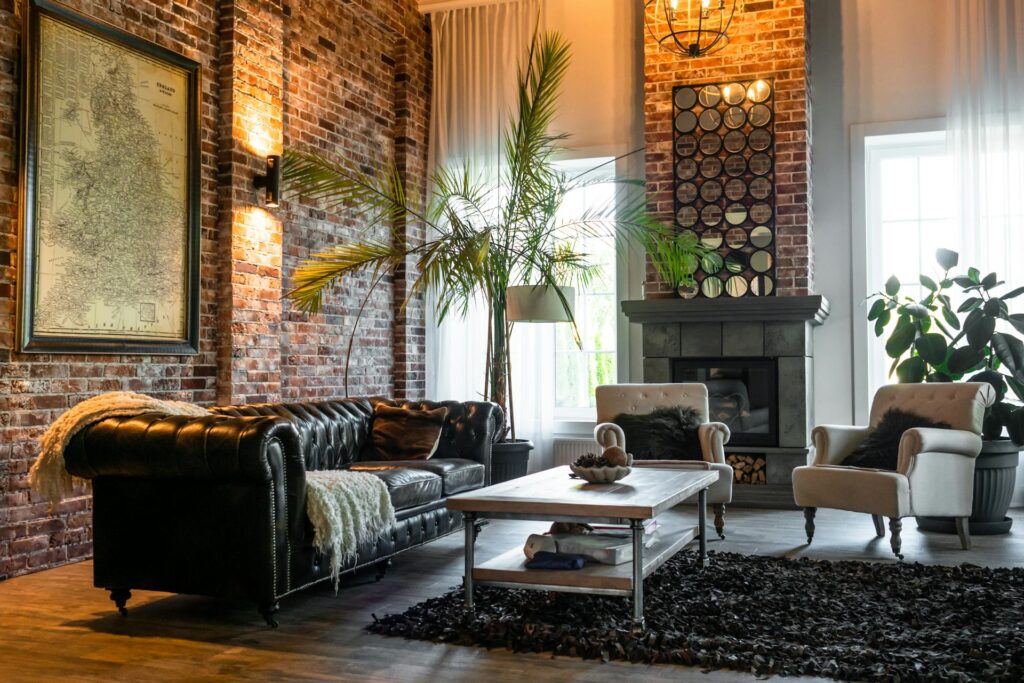If there’s one thing interior designers agree on for 2026, it’s that the rules are out the window. This year’s most exciting home decor trends are all about breaking traditional design boundaries, blending the old with the new, and embracing bold choices that reflect personality over perfection.
While the classics will always have their place, today’s homeowners are leaning into daring materials, dramatic textures, and design statements that feel fresh, personal, and a little bit unpredictable.
Embracing Bold Metals in Soft Spaces
One of the most unexpected developments in home decor for 2026 is the reintroduction of raw, industrial-style metals. But not in the harsh, overly mechanical way we saw in the early 2010s. This year’s metal elements are more refined and intentional. Think brushed steel coffee tables in an otherwise cozy living room or matte iron light fixtures juxtaposed with soft fabrics and warm woods.
Designers are turning to metal to bring contrast and structure into soft, layered environments. In fact, metal is no longer limited to hardware. Instead, it’s now being celebrated as a feature material. From accent walls with custom-cut metal panels to freestanding sculptural decor, this trend is making waves in even the most traditional homes.
Homeowners exploring these materials often rely on professional metal suppliers to source custom sizes or finishes that align with their vision.
Organic Shapes Overtaking Straight Lines
For years, minimalist and geometric design dominated the decor space, but 2026 marks a decisive shift toward the irregular and the organic. Wavy mirrors, oblong tables, and blob-like lighting fixtures are increasingly common in both luxury interiors and accessible home design. This move toward asymmetry adds a sense of movement and softness to spaces, often making rooms feel more comfortable and lived-in.
Interestingly, this approach also plays nicely with the rising popularity of metals and stone. These are harder materials now shaped into curves and unexpected forms that feel artistic rather than industrial. It’s a subtle rebellion against rigid structure, and it encourages a more expressive, less rule-bound approach to home styling.
Rich Colors and Deep Finishes Are Back
Say goodbye to the stark whites and greys that have dominated interiors for the past decade. In 2026, color will be back in a big way. But instead of the bright or playful palettes of previous years. Instead, designers are leaning into deep, moody hues like oxblood red, charcoal green and navy blue, often used in combination with textured finishes such as velvet, plaster, and burnished metal.
This dramatic use of color adds an elegant feel to rooms and pairs beautifully with the trend toward layered lighting and mixed materials. Statement walls in jewel tones or saturated earth shades are especially popular in dining rooms and bedrooms, creating a sense of intimacy and warmth.
Bespoke Details Reign Supreme
Mass-produced decor is starting to lose ground to one-of-a-kind, handcrafted pieces that tell a story. From hand-thrown pottery to custom-built shelving, homeowners are increasingly investing in quality over quantity. The trend reflects a broader cultural shift toward sustainability and conscious consumption, while also speaking to the desire for homes that feel unique and personal.
This is where materials like metal, wood, and stone are getting their moment in the spotlight. Custom elements such as hand-welded metal legs on a reclaimed wood table or a fireplace mantle forged by a local artisan are now centerpieces in the modern home. For DIYers and renovators, working with metal suppliers to source unique components has become a smart way to incorporate individuality into otherwise common furniture or fixtures.
Nature-Inspired Without the Plants
Biophilic design has been trending for years, but in 2026 it’s taking a more abstract and refined form. Instead of simply filling a room with potted plants, designers are incorporating natural influences through form, texture, and material choice. Curved furniture mimics the gentle flow of rivers or hills, while wall treatments and decor pieces often feature stone, terracotta or oxidized metal finishes that evoke the outdoors in subtler ways.
The goal is to create spaces that feel grounded and harmonious, even in urban environments. This evolution of nature-inspired design has led to a renewed interest in materials that age well. These are materials like untreated wood and certain metals that develop a patina over time. These elements add depth and character to a space while quietly nodding to the natural world.
Final Thoughts
2026 is shaping up to be a year of expressive interiors, bold textures and thoughtful contradictions. Whether it’s mixing raw metals with plush fabrics or choosing asymmetrical furniture that plays with visual expectations, the unexpected is officially in.
For those looking to experiment with new materials or create custom decor elements, working with reliable metal suppliers can open up a world of design possibilities. As homes become more reflective of individual style, the ability to tailor every detail has never felt more relevant.

